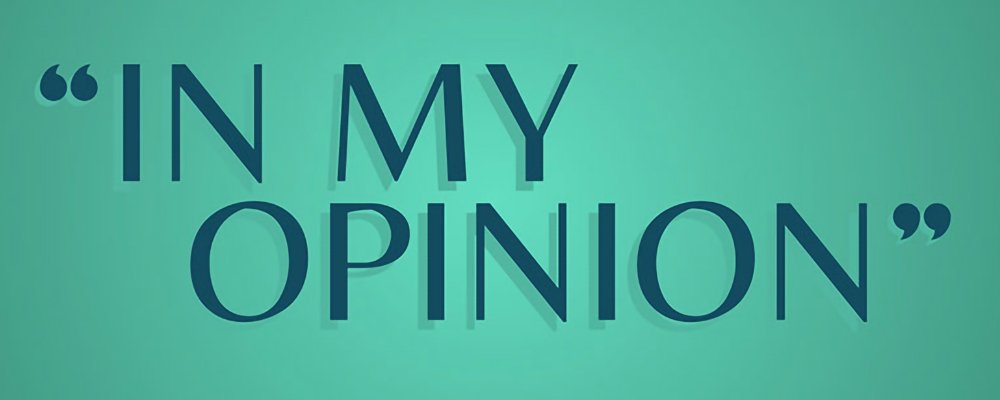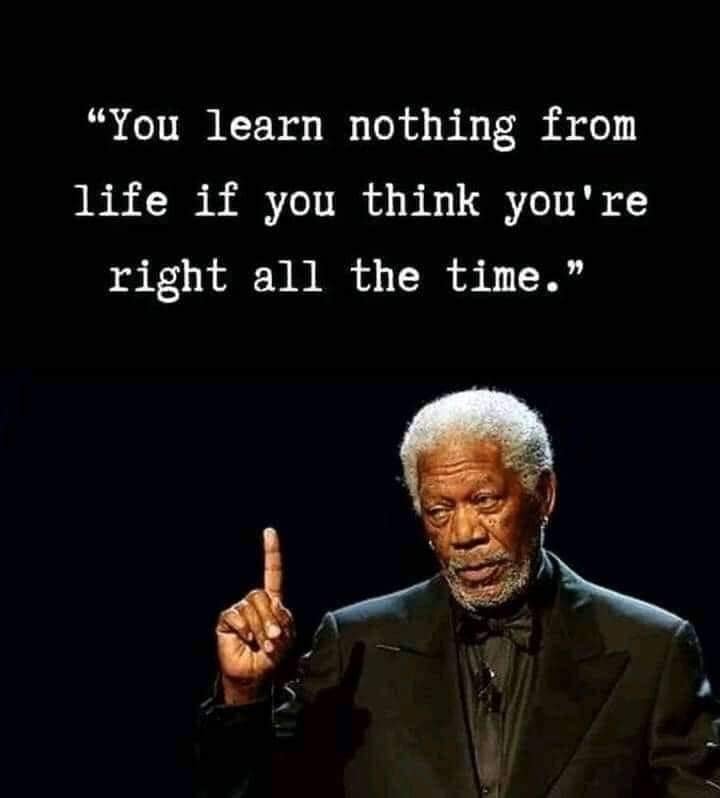I recently attended a leadership lecture at Copenhagen University, and said, "You cannot have imagination free decision making" as it suggests that decision-making and imagination are not independent of each other. I think imagination often plays a role in decision-making, as it allows individuals to envision different scenarios, possibilities, and outcomes related to a decision. However, it's important to note that while imagination can influence decision-making, individuals still have the capacity to make decisions that are not solely dictated by their imagination. The lecturer pushed back with “Decision-making can also be guided by rationality, logic, past experiences, and external factors, depending on the context and the specific decision at hand. So, while imagination can be a valuable tool in the decision-making process, it does not necessarily restrict or eliminate the possibility of free decision-making.” I guess we were both right…
The desire to belong
The desire to belong and the significance of social connection are deeply rooted in human psychology, reflecting our evolutionary history and the importance of group cooperation for survival. Research using brain scans has revealed that social rejection can trigger brain activity similar to physical assault, particularly in regions associated with processing physical pain. This overlap in neural response underscores the emotional impact of social exclusion, evoking feelings of loneliness, sadness, and, in severe cases, depression. I think the human brain's strong response to the threat of rejection is linked to our primal fears of isolation and exclusion.
On the positive side, social connection and a sense of belonging are known to have a beneficial impact on well-being, providing emotional support, a sense of purpose, and even improving physical health. The individual and cultural variations in the strength of this need to belong and the resilience to social rejection underscore the complex nature of human social psychology. Recognising these findings has societal implications, emphasising the importance of creating inclusive communities, fostering social support networks, and addressing social isolation to promote overall well-being and societal cohesion. Are you feeling alone? Contact me via e-mail for discreet 1:1 meetings.
If I had the key
Senior executives require specific knowledge to effectively carry out their roles, for example, they need to know both how to create exciting, profitable new ideas for their business and how to implement them. In other words, they need both intellectual and practical knowledge. I think they need a combination of intellectual insight and practical skills.
Business operations today are focused on enhancing efficiency by optimising processes that may no longer be relevant in the present. This often involves analysing historical data to identify cost-saving opportunities and efficiency enhancements. Unfortunately, this approach frequently leads to a narrow focus on cost reduction, with the finance department receiving accolades for these efforts while escaping accountability for missed opportunities.
There's no easy route
Standard economic theory envisions individuals endowed with perfect information, complete trust, and consistent preferences while possessing a complete understanding of their utility functions. In other words, they possess clear knowledge of their desires, their willingness to invest, and a deep-seated trust in their potential sellers. Many economic models build upon these foundational assumptions, and these models operate under the notion that the sole avenues to enhance a product's appeal involve reducing its cost or expanding its functionality. I think that we have allowed economists to create a culture in which business makes the same assumptions that dictates the only means to enhance value is through efficiency improvements. However, reality teaches us otherwise, value creation can also arise through the establishment of trust, by telling a story which frames the price of the product or function of the product in a new enlightening and more motivating way or selling it in such a way that fosters confidence in the consumer's decision.
What's happening?
As human beings we have two insatiable needs:
1) A desire to feel significant, and
2) The yearning to be truly understood
One of the psychological shortcuts that I use from years of experience is my trustworthiness is in equal parts empathy and expertise, conveying a message that says, “I understand you and I know what I’m talking about.” I know that it’s impossible to fully understand someone else’s experience nor can I emphasise their importance enough. People want to know that you get them or at least you are trying to get them, and if you are attempting to make the effort to step into their shoes then people will give you grace.
I think our natural disposition as human beings is self-centred, we are all wired to focus on our own needs and desires. However, the most effective way to craft meaningful communication is to change our perspective towards empathy for others. As when we are thinking about others, we are not getting that dopamine rush of self-importance and significance. Therefore, the choice of words we employ is a tangible reflection of our understanding, and when we demonstrate that we "get" someone, or that we're sincerely trying to, we begin to unlock the doors of trust. And in doing so, we signal to others that we respect and value their viewpoint, ultimately forging deeper and more meaningful connections. Contact me via e-mail for 1:1 sparring and coaching sessions.
Embracing change
Embracing change is often a daunting prospect for most of us, as the devil you know is better than the devil you don’t know. Despite our professed commitment to concepts like continuous learning, agility, and adaptability, we inherently resist change. This becomes evident when engaging in sales discussions, where customers meticulously evaluate the value of altering their current practices, often dismissing it as a hassle and too risky. In my experience, I have seen then when potential customers are in a completely dysfunctional situation where their world is falling apart, they will choose status quo over change. My primary goal is not to force change upon them but to encourage them to at least consider it. While I may not always succeed in selling them on change through my services, I attempt to move them one step closer and make the idea intriguing enough to invest their time in exploring further.
Mastering the elements
Here are five important components of a business story:
1. A sequence of related events
The narrative should unfold in a logical sequence of interconnected events, and this structure keeps the audience engaged and allows them to follow the story with ease.
2. A time and place marker
Clearly specifying when and where the story unfolds is crucial, as this provides context and also helps to establish a connection with the audience, making them more receptive to the story.
3. A central character
A well-defined central character serves as the anchor of the story, and this character should be relatable and engaging, helping the audience connect with the narrative on a personal level.
4. A surprise
To maintain audience interest, introduce an unexpected twist or unpredictable event, as this element adds an element of intrigue and keeps the audience eager to know what happens next.
5. A business point
Every business story should convey a clear and relevant message or lesson, and this could be a strategic insight, a moral, or a takeaway that aligns with the objectives of the narrative. The business point is what makes the story not just entertaining but also instructive and valuable.
I think by weaving these five components together effectively, you can create a business story that captivates your audience, making your message more memorable and impactful. Contact me via e-mail to arrange a meeting about your business storytelling sequence.
Your words are selling you
I think effective communication is crucial, whether spoken or written. When you're speaking, it's your responsibility to ensure your message is delivered effectively and this holds true not only for salespeople but also for sales managers and company leaders. This is because what you say will be shared, forwarded, and copied, therefore, it's essential to craft a well-structured narrative. This way, your message can be easily understood in the moment and remembered when shared with others in your absence. Your written communication should also be compelling enough to sell your ideas when you're not present.
In a coherent way
Effective communication is a valuable skill, especially in sales, where competition is fierce, and every word can make a difference in closing a deal. When you're in a competitive sales environment, it's essential to focus on creating a strong value proposition, highlighting the unique advantages of your product or service, and tailoring your message to meet the specific needs and pain points of your potential customers. I think the winning margin in competitive sales often comes down to understanding your customers and effectively communicating the unique value your product or service provides.
““When people are presented with the alternatives of hating themselves for their failures or hating others for their success, they seldom choose to hate themselves.””
From the heart
In my opinion, you don’t have to ask for respect as respect is something that is earned. I do lots of charity work and I do it because I want to do it, I don’t do it to gain media attention. I do so many things where I am in the background as I don’t need the external validation because I do it from my heart. I see other people doing things and everything is on their social media platforms, I do it because I want to do it, not because of building my personal brand or image.
The Learning Pyramid
The Learning Pyramid is framework that identifies the seven methods of learning, and the effectiveness of each method in terms of knowledge retention. In the illustration you can see that the lower effectiveness percentages are assigned to the passive learning methods like lectures and reading, while the significantly higher percentages are attributed to active learning methods such as group discussions and hands-on practice. These percentages were borne from extensive research by the National Training Laboratories Institute.
A life based on reason
Lucky people work very hard, have high integrity, show up on time, have good manners, show high rate of learning, are self-aware, optimistic, kind, and generous. I think that true spiritual warriors seek wisdom and knowledge from everything as no matter how educated, talented, or rich you are, how you treat people ultimately tells all.
““A humanist has four leading characteristics - curiosity, a free mind, belief in good taste, and belief in the human race.”
”
Happiness is not a destination
Happiness is a skill that can be developed by aligning your inner values with your external actions, finding contentment in your life and decisions, and focusing on what you can control. Understanding and living in alignment with your values is key to living a happier and more fulfilled life. I think that by treating yourself with kindness and respect is essential for our health and happiness. The best people that I know are not chasing compliments or validation. Learn to fight for your happiness and do it with dignity, optimism, and grace.
““Sir, I am a true laborer; I earn that I eat, get that I wear; owe no man hate, envy no man’s happiness; glad of other men’s good, content with my harm; and the greatest of my pride is to see my ewes graze and my lambs suck.””
Kindness is not weakness
I’m not impressed by:
1. Money
2. Job titles
3. Appearances
4. Experience
5. Affiliations
6. Imitations
7. Big words
The things that impress me are:
1. Kindness
2. Trustworthiness
3. Unselfish generosity
4. Humility
5. Great manners
6. Self-awareness and courage
7. Integrity and benevolence
Four ways
There are only four ways to increase profit:
Increase volume
Increase price
Reduce cost
Change product mix
It's important to note that these strategies are not mutually exclusive, and often, businesses use a combination of these approaches to achieve sustainable profit growth. Also, other strategies and factors can influence profitability, such as marketing, branding, customer service, and innovation. Even though I think that understanding the changing market dynamics is typically the most effective way to increase profit over the long term. The effectiveness of these strategies can vary depending on the industry, market conditions, and the specific circumstances of a business. Contact me via e-mail to arrange a meeting about a more well-rounded approach that considers all aspects of your business.
A non-linear process
Design thinking is a problem-solving methodology that is centred around five key stages: empathise, define, ideate, prototype, and test. These stages serve as the cornerstones of the approach, guiding individuals, and teams through a structured process for innovation and problem-solving. I think design thinking is a versatile methodology that can be applied to a wide range of challenges and industries. It's not limited to traditional design fields but is applicable in business, healthcare, education, and countless other areas. By emphasising user needs, defining clear problem statements, fostering creative ideation, building prototypes, and continually testing and improving solutions, design thinking offers a holistic and iterative approach to problem-solving that can lead to innovative and user-centred outcomes in virtually any context.
Dual process
Dual process thinking is a psychological concept that describes two distinct modes of cognitive processing, in other words, how humans process information and make decisions. Daniel Kahneman wrote in his best selling book, “Thinking, Fast and Slow” about System 1 and System 2 thinking.
System 1:
This is often referred to as the "fast" or "automatic" thinking system. It involves quick, intuitive, and often emotional responses. System 1 thinking doesn't require conscious effort and is responsible for making rapid judgments and decisions based on instinct and previous experiences.System 2:
This is the "slow" or "deliberative" thinking system. It involves analytical, rational, and logical thinking. System 2 thinking requires conscious effort and is used for more complex decision-making, problem-solving, and critical thinking.
Silent anticipation
Being both empathetic and strategic in your approach to communication is akin to playing a game of chess where you're thinking several moves ahead. It involves considering not only where you want to ultimately arrive in the conversation but also what specific outcomes you aim to achieve. I think the person asking the questions is the person in charge of the conversation, as by guiding the dialogue through thoughtful inquiries, you can influence the direction of the discussion and ensure it aligns with your objectives. Just as a chess player anticipates their opponent's moves, a skilled communicator anticipates the responses and reactions of the person they're engaging with. In addition to asking the right questions, it's crucial to recognise that clients often convey their thoughts and feelings through storytelling, and as a result, effective listening becomes a critical skill. This entails not only hearing the words being spoken but also paying close attention to emotional cues and non-verbal communication, for example, observing body language cues, such as leaning forward in interest or using expressive hand gestures, can provide valuable insights into the client's engagement level and emotions.
Food for thought
Learn how to tell a story
I think you should always enter client meetings with a clear understanding of your desired outcomes. Advance preparation, including the formulation of your preferred questions, is essential. What questions do you find most effective? Customise them to align with your personal questioning style, and ensure they remain open-ended. It's crucial to avoid the common practice of extracting information solely to manipulate the client. Instead, aim to have the client do the majority of the talking, encouraging them to share anecdotes and stories. This approach maximises their willingness to unveil their underlying challenges.





















